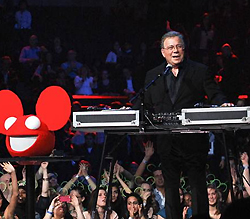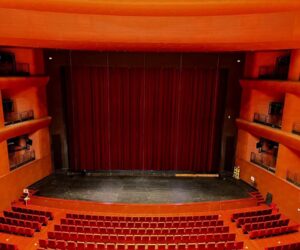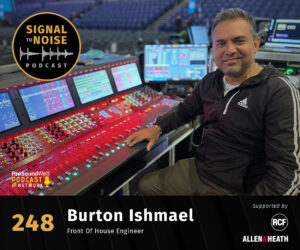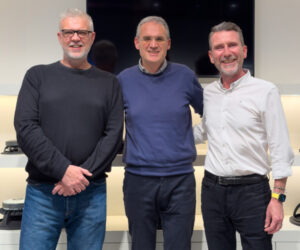Honoring the best of Canada’s music industry, the 2012 JUNO Awards in early April at Scotiabank Place in Ottawa utilized numerous Shure microphones, wireless systems and IEM systems for live performances, as well as host William Shatner and other applications.
Transmission Squelch was charged with the operation of dozens of wireless systems utilized on the broadcast w. The wireless needs for this year’s show included 42 microphones, 28 in-ear monitoring systems, and 28 intercom systems, including 8 channels of Shure Axient wireless microphones and 18 channels of Shure PSM 1000 in-ear monitors, supplied by Solotech.
Christian Pageau, co-owner of Transmission Squelch, was impressed with the Axient system, which utilizes frequency diversity and advanced interference detection technology. “Solotech offered the opportunity to try the Axient and I was very interested, so we agreed to try it during rehearsals,” he notes. “We did a lot of tests during the week, and it worked really well. In fact, it was my decision to use it in the show, and to put it on the main host.
“The filtering on the receiver is really good, so you can put more frequencies in the same range,” Pageau continues. “I also love having remote control of all the transmitter functions. To change the gain, or mute the RF, or even change the frequency at a distance, is incredible.”
During the telecast, Pageau dedicated two Axient channels to host Shatner, with additional channels assigned to the award presenters. “The two channels for the host were in frequency diversity mode, which was set up to prompt me if a frequency problem was detected,” he says. “They can also be set up for automatic operation, but I prefer to keep my hand on the steering wheel.””
For the show’s musical performers, Solotech provided 24 channels of in-ear monitors, 18 of which were Shure PSM 1000, which offers diversity reception. “Transmission Squelch had tested the PSM 1000 previously on a show in Montréal called Star Academy, and the results were very good,” reports Pageau. “So we asked Solotech to supply them. The diversity worked well everywhere in the venue, even backstage. Everyone was very happy with the system.”
To make all the on-stage wireless work smoothly along with the intercom systems in use by the crew, Pageau used frequency calculation software developed by a Canadian company EazyRF. He also designed and installed the antenna system for the show.
“We ran all the systems for the show with only four antennas – two to receive and two to transmit,” he states. “It was a full active system. For the reception, I was doing a star system, going through a distribution amplifier. The antennas were about 35 feet above the stage on either side. The transmitting system was active combining, with one helical antenna for intercom and another for all the in-ears.”
Shure Wireless Workbench 6 software helped keep the systems organized, to complement by an Anritsu Spectrum Analyser. “Workbench 6 was a beta version of the software for the Mac, and it worked perfectly,” Pageau notes. “I use it two ways. I use it to transfer labeling data, which is quicker than dialing each name on each receiver. Then, of course, I use it to monitor the systems during the show.”




















